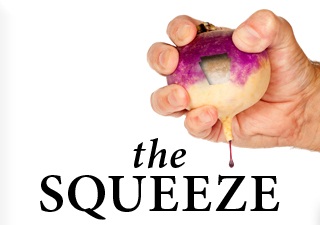Media
Government Unions Tighten Squeeze
 Following the passage of Right to Work in Michigan, pundits are wondering about the prospects of similar reform here in Pennsylvania.
Following the passage of Right to Work in Michigan, pundits are wondering about the prospects of similar reform here in Pennsylvania.
The Philadelphia Inquirer correctly notes Right to Work faces an uphill battle in Pennsylvania, along with New Jersey, but incorrectly assesses the politics behind this:
In Pennsylvania, it is not so much the perceived power of labor unions that tamps down any fervor for pursuing such a law – though, with 14.5 percent of its total workforce unionized, Pennsylvania ranks 15th in the nation and has an organized-labor machine with potent electoral muscle.
Rather, it’s that Republican lawmakers may be loath to take on the political risk of further eroding middle-class wages and benefits by taking such a direct swipe at unions. The market has done an efficient job so far of whacking union wages and benefits without legislative intervention.
Wrong on both charges. In fact, Right to Work states have higher job growth, higher wage growth, and higher compensation adjusted for cost of living than forced union states. Despite forced unionization, Michigan lost 300,000 union members from 2001 to 2011—more than any other state. This is primarily because Michigan lost more jobs than any other state. Other forced union states also lost both jobs and union members; Pennsylvania lost 114,000 union members over that time.
Rather, it is the political power of government unions that hold back Right to Work, pension reform, private liquor stores, school choice, and other critical policy reforms. A recent Fordham Foundation report found that the Keystone State had the 4th most powerful public school unions.
To understand this power, let’s look at the political spending of government unions in Pennsylvania and Texas—a state twice our size, but with a Right to Work law. Pennsylvania’s government unions spent $37 million from union dues on politics and lobbying from 2005 to 2011 (dues cannot be used for campaign contributions, but can be used for independent advertising, lobbying, and other political action) and $13 million in Political Action Committee (PAC) contributions to candidates from 2005 to 2012. This $50 million binge represents four times what government unions in Texas spent over that time.
| Political Spending by Government Unions 2005-12 | |||
| Pennsylvania | Texas | Ratio, PA to TX | |
| Political Spending from Dues (largest unions)* | $36,727,147 | $4,894,478 | 7.5 to 1 |
| Political Action Committees** | $12,915,974 | $7,560,055 | 1.7 to 1 |
| Total | $49,643,121 | $12,454,533 | 4.0 to 1 |
| *Wall Street Journal, http://professional.wsj.com/article/SB10001424052702304782404577488584031850026.html |
|||
| **Follow the Money, http://www.followthemoney.org/database/state_overview.phtml | |||
Collective bargaining agreements, including state union contracts, often require school districts, state, and local governments to deduct union dues and even PAC money from workers’ paychecks without them ever seeing the money. The effect of these special privileges for government unions is that union bosses spend far more money on politics here in the Keystone State than those in Texas.
For more on how unchecked government union power and political influence hurts Pennsylvania taxpayers, workers, and even union members, read our report The Squeeze.